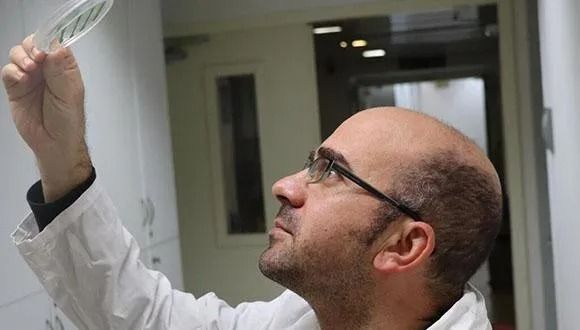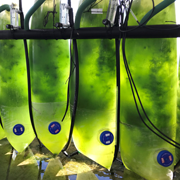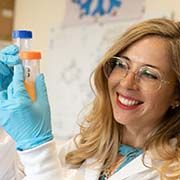Learning from The Fastest Growing Alga in The World
In scientific first, researchers successfully map photosynthetic properties of the Chlorella ohadii
Sustainable food are grown, produced, distributed and consumed whilst keeping the environment in mind, and thus believed to help combat climate change. In a recent study, researchers set out to reveal the secret behind the rapid growth of “the fastest growing plant cell in the world,” the green alga Chlorella ohadii. Why? A better understanding of Chlorella ohadii, they assessed, might possibly help improve the efficiency of photosynthesis in other plants as well, and in turn help develop new engineering tools that could provide a solution for sustainable food.
Can We Boost the Photosynthesis in Plants?
The study's findings indicate that the main factors behind the plant’s rapid photosynthesis rate lie in its efficient metabolic processes. The researchers found that this alga has a unique ability to elicit a chemical reaction in which it is able to efficiently and quickly recycle one of the components used by an enzyme called RuBisCO, in a manner that significantly speeds up the photosynthetic processes.
The study was led by researchers from the Max-Planck Institute for Molecular Plant Physiology in Germany, Participating in the study was Dr. Haim Treves, a member of the School of Plant Sciences and Food Security at Tel Aviv University, together with colleagues at the Max-Planck Institute for Molecular Plant Physiology in Germany. The study was published in the prestigious journal Nature Plants.
In the framework of the study, the researchers sought to examine whether it is possible to improve the efficiency of photosynthesis in plants, an energetic process that has been occurring in nature for about 3.5 billion years. To try to answer this question, the researchers decided to focus on green algae, particularly the Chlorella ohadii variety. This alga is known for its ability to survive in extreme conditions of heat and cold, which forces it to exhibit resilience and grow very quickly.
The researchers assessed that a better understanding of Chlorella ohadii (named after the late botanist Prof. Itzhak Ohad) would make it possible to improve the efficiency of photosynthesis in other plants as well, and in turn to develop new engineering tools that could provide a solution for sustainable food.
Online Monitoring of Photosynthesis
In the process of photosynthesis, plants and algae convert water, light and carbon dioxide into the sugar and oxygen essential for their functioning. The researchers used innovative microfluidic methods based on complex physical, chemical and biotechnological principles in order to provide the algae with carbon dioxide in a measured and controlled manner and monitor the photosynthesis “online.”
By using a comparative analysis, the researchers identified that there was a fundamental difference in the photosynthetic processes carried out in in green algae compared to the model plants. They assess that the difference lies in variations in the metabolic networks, a deeper understanding of which will help in developing innovative engineering solutions in the field of plant metabolism, as well as the optimal engineering of future agricultural products.
“Past empirical studies have shown that photosynthetic efficiency is higher in microalgae than in C3 or C4 crops, both types of plants that have transport systems but which are completely different in terms of their anatomy and the way they carry out photosynthesis,” Dr. Treves explains. “The problem is that the scientific community does not yet know how to explain these differences accurately enough.”
Dr. Treves adds, “In our current study we mapped the patterns of energy production and photosynthetic metabolism in green algae and compared them to existing and new data collected from model plants. We were able to clearly identify the factors that influence the difference in these patterns. Our research reinforces previous assessments that the metabolic pathway responsible for recycling is one of the major bottlenecks in photosynthesis in plants. The next step, is to export the genes involved in this pathway and in other pathways in which we have detected differences from algae, and to test whether their insertion into other plants via metabolic engineering will increase their rate of growth or photosynthetic efficiency.
“The toolbox we have assembled will enable us to harness the conclusions from the study to accelerate future developments in engineering in the field of algae-based sustainable food as a genetic reservoir for plant improvement; monitoring the photosynthesis is a quantitative and high-resolution process, and algae offer an infinite source of possibilities for improving photosynthetic efficiency.”






